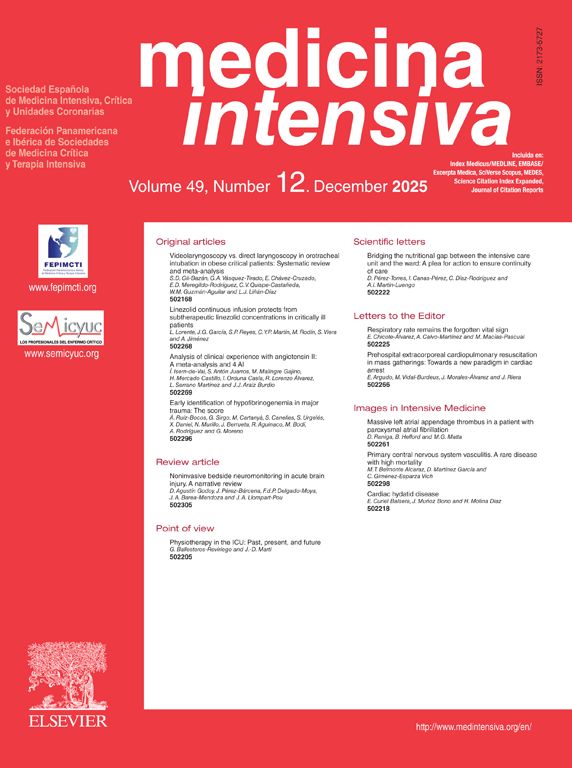A 16-year-old male was admitted due to a three-day period of fever, asthenia, headache, photophobia and the appearance of purpuric skin lesions in the pretibial region, with drowsiness, disorientation and loss of sphincter control. The brain CT scan showed no alterations, and the lumbar puncture produced turbid cerebrospinal fluid. Meningococcal meningitis was finally diagnosed. Exploration revealed left eye corneal opacity with blurred vision (Fig. 1). Ocular ultrasound was thus performed, evidencing large vitreous condensations (Fig. 2). With the strong suspicion of endogenous endophthalmitis – a rare but potentially serious complication with a high risk of sequelae – intravitreous ceftazidime and vancomycin were administered. The neurological condition improved, and the patient was oriented and cooperative at the time of discharge, though with persistence of the corneal opacity.
Conflicts of interestThe authors declare that they have no conflicts of interest.








